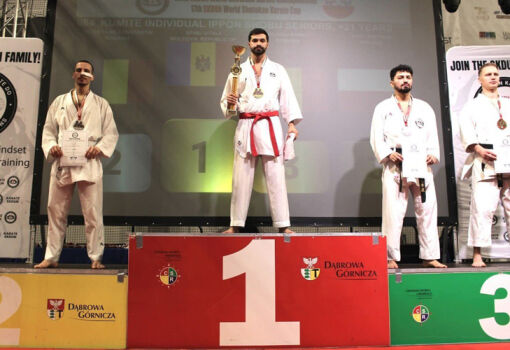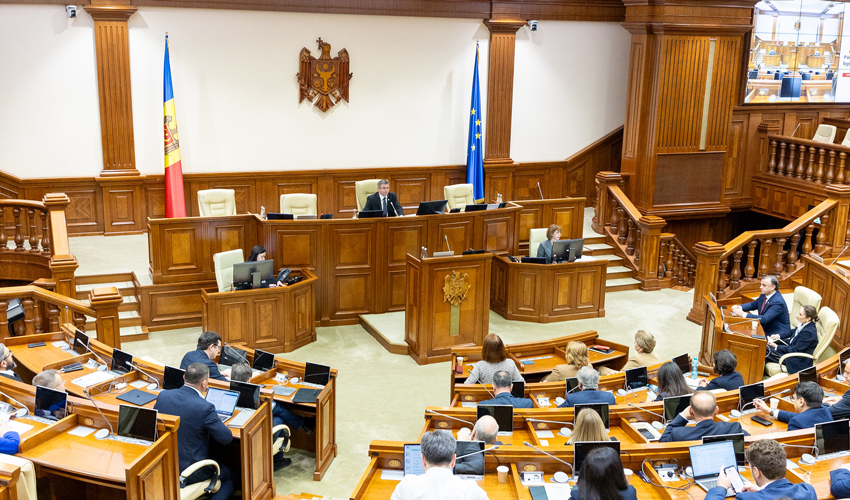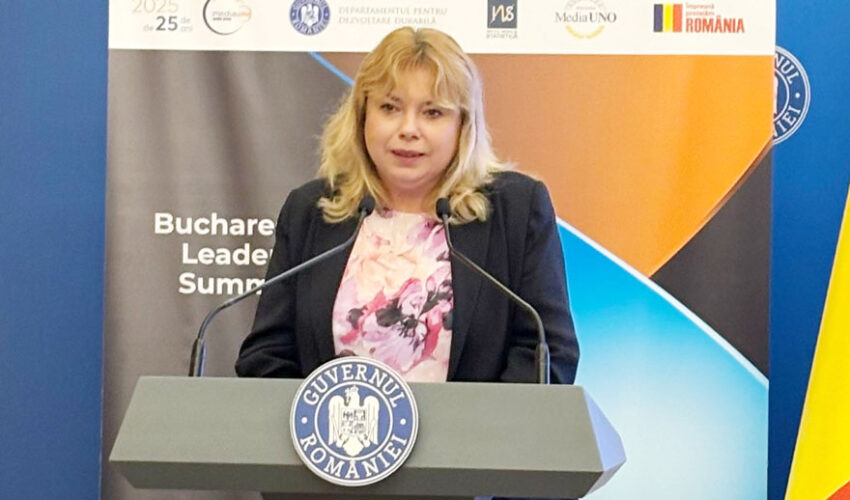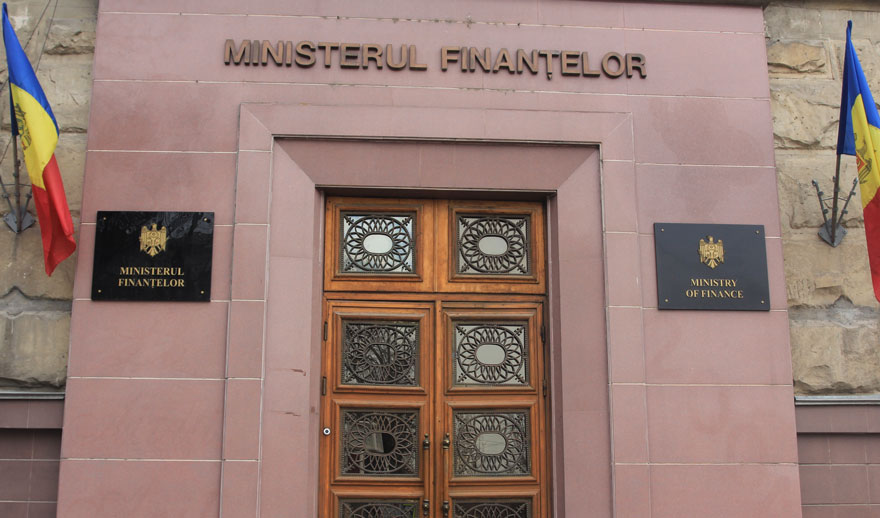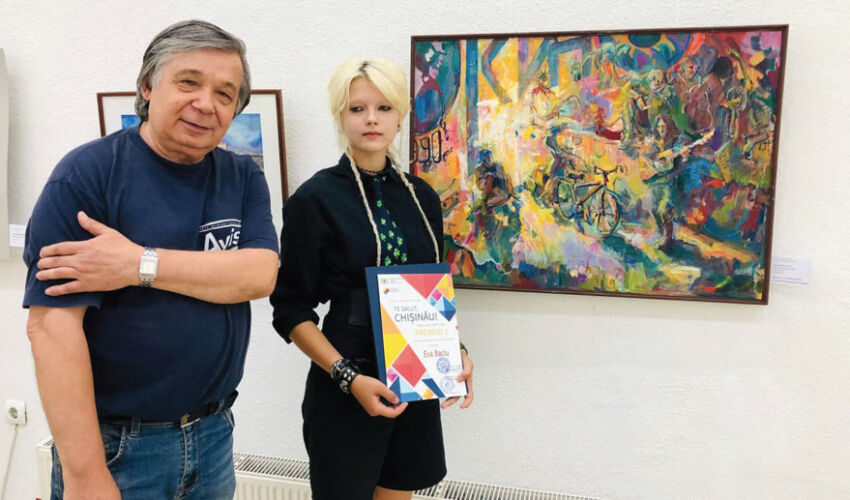
Vyacheslav Bakitsky
Veaceslav Bakitsky named the exposition intriguingly: “The Illusion of Permanence” (“Iluzia Frecvenței ” – meaning translation into Romanian). “People strive for stability, permanence, but I came to the conclusion that these things are illusory,” Vyacheslav Nikolaevich comments. – There is only here and now, not the past or the future. And our whole life consists of momentary moments”.
There are 58 works in two halls. The author has divided them according to their meanings: the first room contains conceptual paintings, the second room is mostly nature paintings, landscapes, portraits, and there are works painted many years ago.
His works have original titles. For example, “Metopes,” an element of the ancient order. “I used this name to somehow designate the antique plot,” explains the artist. – I love antiquity very much, and I would like to live in that environment”.
And here’s what art historians say about his conceptual realism. This is a mediated return of viewers to the experience of mythological understanding of life in images, the cult of the heroic, a sense of saga, lyrical mood, philosophical reflection. In painting, the artist uses spatial and volumetric plastic accents carrying figurative information. Aesthetic and plastic rationalism combined with texture and saturation of color. Improvisation is contrasted with plastic clarity, and together they form the spectacularity of the picture plane.
The viewer is given the opportunity to extract something iconic, recognizable from the medley of abstract improvisations and, combining everything into a personal dramaturgy, to compose his or her own vision of the world. Each painting is a kind of provocation for reflection in a given space and time, very often unfamiliar. Therefore, there can be no ready-made answers, the artist and the viewer are in search of points of contact. And when they are found, it is a great fortune for both.
In Vyacheslav Bakitsky’s abstract works – only a concept, without realism. “With the help of abstract writing you can, in my opinion, more vividly express your emotional attitude to the problem – believes the artist. – But even abstract painting should be motivated by some real emotions.
His realistic landscapes attract inexplicable closeness, as if I have met them before … “The viewer looks at the sketches, landscapes and sees how I emotionally perceive this or that motif. My difference from many others is that I convey a state of unsteadiness, the momentary, which I value very much. I write with emotion. And if I don’t achieve the ‘sound’ of the sun, or any other kind of sound, then I have failed.
In the hall are landscapes of different states. Vyacheslav Bakitsky says that he likes to write, including urban and rural backyards. Some landscapes he painted in the presence of his students, who watched the process.
“We are given harmony in feeling,” says the artist. – And so when everything in the complex in the sensations of the picture is true, the viewer agrees with the artist, and if there is no truth, or he does not feel it in the end, then we diverge like ships at sea”.
In 1982, Vyacheslav Bakitsky graduated from the Kiev State Art Institute and joined the Republican Art School named after I.E. Repin in Chisinau (now the Art College named after A. Plamediale) as a teacher. I thought it wouldn’t last long, but somehow I got “attached”. He taught at the school for 35 years, and now he works on Sundays at the A. Shchusev Children’s Art School and the I. Vieru Academic Art Lyceum.
“I am not a teacher by education, it is not my pedagogical experience that educates pupils, but the way of life and art itself, as such, – comments the artist. – And there must be a desire of the student to learn to draw, write, to see the world beautiful. And the teacher’s task – I consider myself a teacher, not a pedagogue – is not to interfere. Because we often interfere with this process with our pedagogical, as it seems to us, things”.
Bakitsky says he strives to teach his students perception. “Because mastery with diligence will definitely come, at least relatively. But to perceive the world in a whole, interesting, bright, unusual way – this must be learned. Perception is a hard labor”.
Vyacheslav Nikolaevich is convinced that feedback is very important in training. The main thing is the counter movement of the teacher and the student. “I try to explain, show, he tries to understand. In the end, we will meet at point X, and we will get the result. And if some side will not try, will not look for points of contact, we will just go on a parallel course”.
Vyacheslav Bakitsky raised the problem of master classes, where they supposedly teach painting, have become widespread in recent years. “Today we paint a fungus – everyone performs. Tomorrow – hyacinth, and so on. But it has nothing to do with art. It means killing that little bit of art that is in a person. Unfortunately, artists do this because they want success here and now.”









